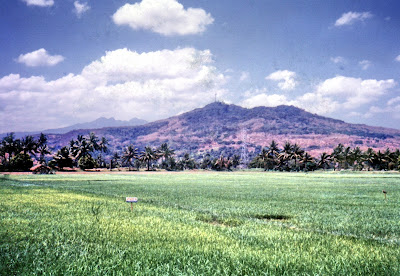The next day, Saturday, was family day and what better way to spend than a day of swimming at the beach. However, the nearby beach was heavily-crowded with Holy Week revelers and so we decided to look for our own secluded spot by hiring a motorized banca for this purpose. The long stretch of black sand beach was lined with a number of beach resorts, notable of which are the upscale Strand and Waterfront Resort.
 |
| Puno ng Pandil |
There are also a number of private beachfront residences. Just when we thought we would never find our own private cove, we espied the picture-perfect and postcard-pretty scene of an unusually white sand beach backed up by a sugar loaf mountain. Locally called Puno ng Pandil, we finally found our own private nook. Here, we swam to our heart’s delight with the cool feel of the white sand beneath our feet. It was truly something worth returning to.





























